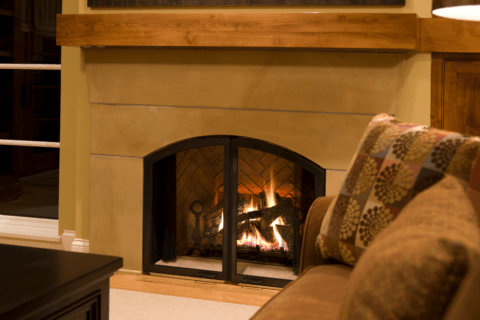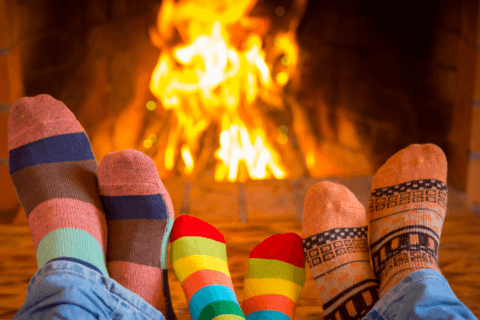Do I Need to Completely Extinguish a Fire Before Leaving the House?
One of the most important (and maybe the most obvious) safety precautions you can take when you have fires burning in your fireplace frequently throughout the winter is to completely extinguish the fire before you leave the house or go to bed for the night. Yes, every single time. And although there are a few exceptions as to when you can get away with not extinguishing the fire—we’ll get around to addressing those—you should understand that this is a safety precaution you should never be lax about or compromise on.
Let’s start by addressing the fact that we know it can be inconvenient. You have fires going frequently, whether it’s just because you like the atmosphere that a fire provides or it’s because you rely on the fire to heat your home. Whatever the reason, you try to have a fire going in your fireplace every night.
But then there are those surprises that pop up. One of your kids needs a ride somewhere at the last minute. You realize you forgot to pick up something at the grocery store or pharmacy. You just have to step out of the house for five minutes. It would be a mistake to think that you can just swivel shut the glass doors to your fireplace and assume nothing bad is going to happen.
Similarly, if you’re up late enjoying the warmth of the fire, and you know you’re going to be up again early the next morning, you might wish to just leave a few burning embers in your fireplace when you head upstairs to bed. Those little embers can’t possibly be that big of a fire hazard, can they? And besides, you’re just going to have to re-ignite the fire tomorrow morning, so you don’t want to extinguish the fire completely.
But let’s reiterate this one more time:
Extinguish the fire completely every time you leave your fireplace unattended.
The one exception to this rule is if you have a potbellied stove or a fireplace insert. Because these appliances can be completely closed up and safely contained, they do not pose a fire hazard if you leave them burning overnight without supervision.
Now let’s turn our attention to the logistics of putting out a fire.
How do I extinguish a fire?
A fire needs three things to sustain itself: first, it needs fuel, such as wood or kindling of some sort; second, it needs heat; third, it needs oxygen. If you remove one of these three things, the other two will not be enough to sustain the fire and it will burn out. Even a hot fire with plenty of oxygen will go out if it doesn’t have any fuel to burn. And a fire with plenty of fuel and heat won’t last long if it runs out of oxygen.
Start by trying to deprive your fire of as much fuel as possible. When you’re ready to put your fire out, use a shovel and a poker to spread the burning wood and ashes across the floor of your fireplace so they are flat. This eliminates significant fuel sources and even helps to diminish the heat by spreading the burning elements out.
You can then cut the fire off from oxygen by scooping up some of the ash with a shovel and piling it on top of any embers. When the fire is buried under ash, it won’t have access to oxygen.
If you don’t have enough ash to fully cover what remains of your fire, you can use sand. This is why, if you frequently build fires throughout the winter, you might want to keep a bucket of sand near your fireplace. Baking soda is another great suffocation method—baking soda is actually similar to the element used in fire extinguishers.
Whatever you do, don’t use water. Water will give off too much smoke and steam, which could push heat and fire particles into your home, causing burns, foul smells, and stains on surfaces.
Helpful tip: Don’t close the damper
Another important thing to remember is that you don’t want to close the damper as a method of putting out a fire. A closed damper seems like the type of thing that would cut off oxygen to your fire, but it will also force smoke in your living room. Additionally, it could cause a greater buildup of creosote, which is a fire hazard.
Banking your fire
If you really want to save some of the fuel for building a fire the next day, your best option is to push all the embers and pieces of wood that are still burning into a pile and cover them with a heavy pile of ash. The ash will insulate these remaining parts of the fire so they stay warm but do not pose a fire hazard.
At ChimneyTek, we want to make sure fires in your fireplace are always as safe as they are enjoyable. If you have questions about using your fireplace safely, reach out to our team today by calling 410-796-8450.


